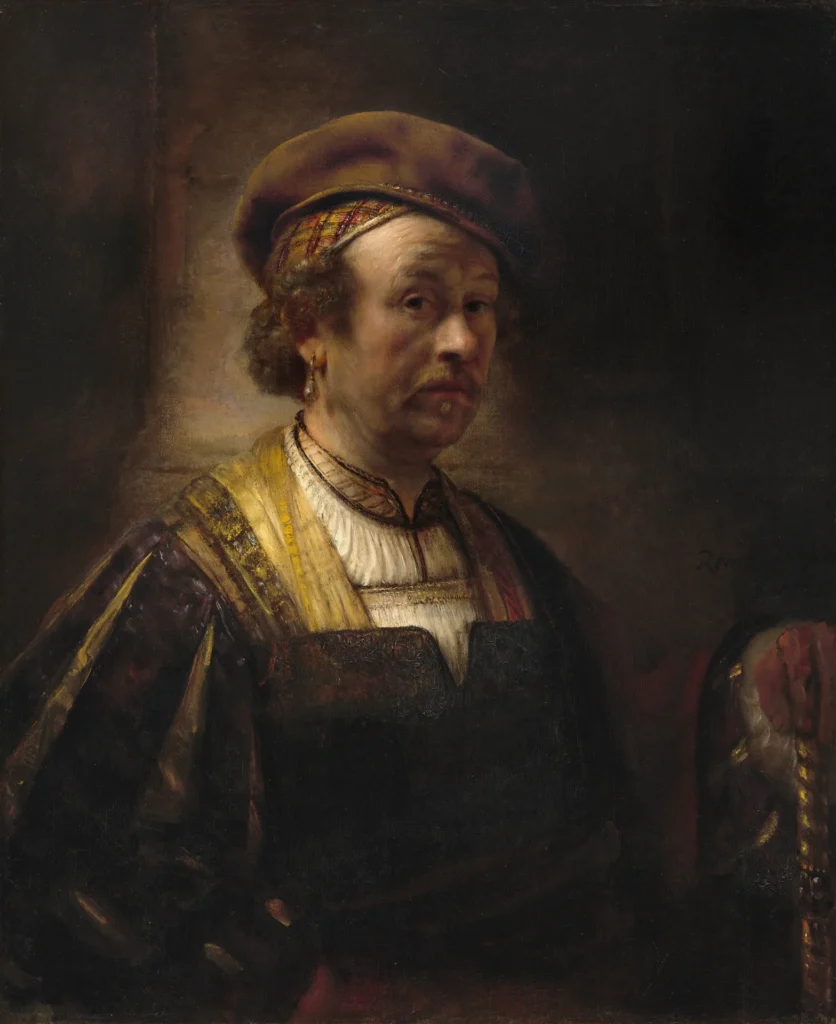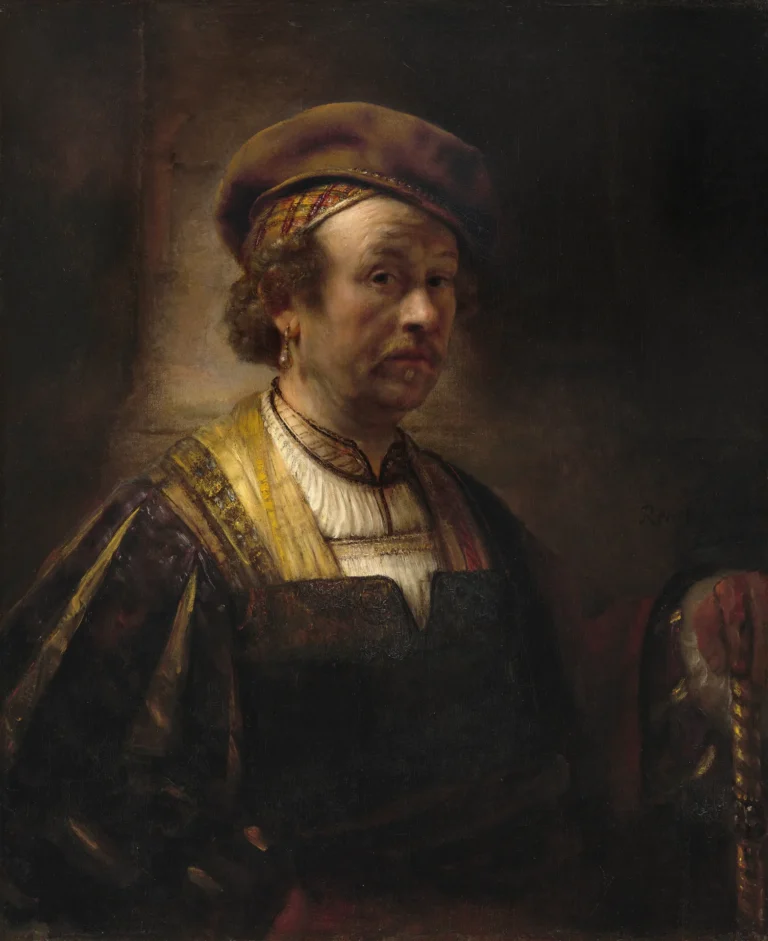Self-Portrait III of Rembrandt Van Rjin
Rembrandt's self-portraits, numbering around 80 to 100 throughout his lifetime, are remarkable depictions that chart his journey as an artist from youthful exuberance to reflective maturity. The 1659 self-portrait captures the essence of Rembrandt at age 53, elucidating his life experiences through rich textures and profound expression. The evolution portrayed in these artworks reflects his introspective journey and deep engagement with the complexities of life, artistry, and identity, making these pieces some of the most celebrated in the art world.
1659
About the Artwork
Throughout his career, Rembrandt van Rijn created a vast array of self-portraits that chronicled his life and artistic evolution, embodying his experiences and emotions across different ages. The 1659 self-portrait, painted when Rembrandt was 53, is particularly significant, showcasing the artist with deep-set eyes that convey wisdom and resilience. This period of his life was marked by personal and financial struggles, yet his artistry flourished. The piece, influenced by the portrait of Balthasar Castiglione by Raphael, encapsulates Rembrandt’s mastery of light and shadow, providing a glimpse into the soul of a man who both painted and lived art with passion. The restoration in 1992 brought forth subtle nuances in his skin tones, enriching interpretations of his seasoned yet introspective character, making it a revered work in art history.
Did You Know
Rembrandt is often acclaimed as the master of chiaroscuro, a technique that plays with light and shadow to add depth and emotion, evident in his self-portraits.
Rembrandt’s self-portraits serve as a canvas for his introspection, revealing not just his technical skill but also his emotional landscape and personal hardships.
The self-portraits are crucial to understanding the artist’s legacy, as they not only document his evolution but also reflect the societal changes in 17th-century Holland.










